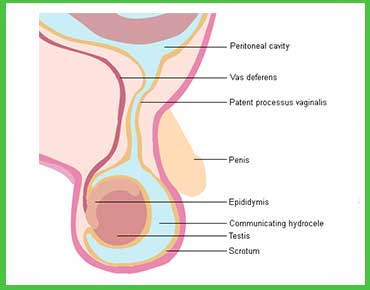
Hydroceles are defined as spaces housing clear fluids around testis that cause scrotal painlessness swelling. It is common for newborns and astronauts, where hydroceles arise due to an imbalance between the secretions and drainage of fluids. Most hydroceles are innocuous despite some underlying concerns, such as infectious or traumatic processes. The majority of hydroceles self-cure; however, treatment may be necessary for those that are persistent or very large. It does not affect fertility, and the visible swelling may cause discomfort and consistently be on the mind. Several cases or large hydrocele may require surgical treatment for symptomatic relief or consideration of more serious conditions.
Most newborn hydroceles spontaneously resolve within one year. So also, small, painless hydroceles in adults do not require treatment. However, larger or persistent hydroceles may require aspiration, draining of fluid, or sclerotherapy, injecting into a cavity to prevent further fluid accumulation if symptomatic or complications arise. Hydrocelectomy is then performed for draining the fluid for permanent relief from symptoms. For the infectious cases, patients require antibiotics or anti-inflammatory medication. Regardless, all patients deserve medical evaluation to rule out any possible pathologic conditions like testicular tumors or hernias.
